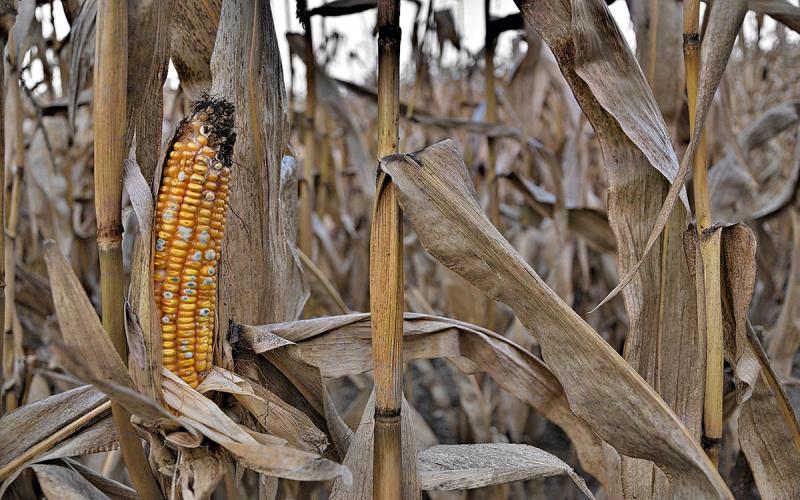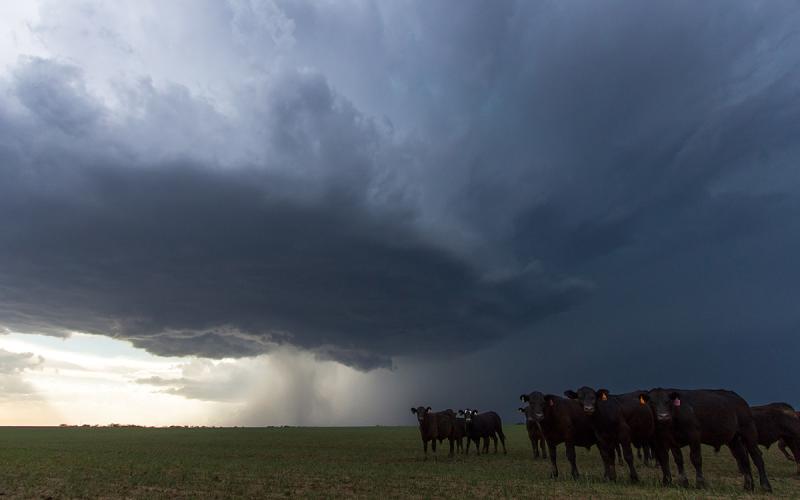Originally written by Tracey Erickson, former SDSU Extension Dairy Field Specialist.
Cold stress starts when temperatures drop below 60 degrees Fahrenheit in dairy calves who are less than 21 days of age and when below 42 degrees (Litherland, 2013) in calves greater than 42 days of age.
Winter can present extra challenges for dairy producers and heifer growers as they try to keep calves alive and growing adequately in frigid temperatures.
Some tips to care for un-weaned calves in cold weather are as follows:
- Get them off to a good start in the first 48 hours of life - following proper protocols for newborn calves, especially drying them off as quickly as possible after birth and making sure they are consuming 4 quarts of high quality colostrum within the first 6-12 hours of life, as well as giving proper vaccinations, and dipping their navels. Jersey calves will consume less than large breed dairy calves of colostrum. Check the quality of colostrum making sure it has adequate antibody
- Consider using a calf warmer to quickly dry newborn calves and help increase body temperature.
- Deep Clean & Dry bedding. Provide a proper nest; when they are laying down a guide is that one should not be able to see the feet & legs of the calf.
- Calf blankets - even though they add extra expense, they are reusable and provide an extra layer of protection for calves. Make sure to adequately clean and dry blankets between uses.
- Proper ventilation is important but you must also prevent direct drafts from hitting young calves. Fresh air helps reduce the presence airborne pathogens and ammonia that produced by urine & manure.
- Keeping the housing environment and equipment clean is also necessary to improve the overall survivability. All equipment should be cleaned using 120 °F water along with using adequate detergents and disinfectants solutions on bottles, nipples, tubing equipment, balling guns, and buckets. Rinse with cold water when done cleaning.
- Additional feedings per day – NRC estimates that one additional feeding of (0.5 pounds of powder) of 20% protein, 20% fat milk replacer will meet the maintenance energy needs of calves at 20 °F less than 3 weeks of age. At -20 °F you would need to increase it to 2 additional feedings. Adding additional feedings should be offered when cold weather is expected to set in for a week or more. It is better to increase the number of feedings instead of adding fat to milk replacers. The reasoning is that by providing extra calories by adding fat to milk replacer causes calves to expend energy to digest the extra fat that they are not accustomed to in their daily diet. Research has shown that feeding milk replacer three times per day will help stabilize the pH in the rumen of the calf for better feed efficiency.
- Provide a high quality, fresh starter daily (free of mold and fines), to encourage daily intake. Calves greater than 3 weeks old need to consume an additional 0.6 pounds of 18% crude protein starter at 20 °F and at -20 °F starter intake should increase by 1.4 lbs per day.
- Other options of increasing caloric intake. Provide warm water above 102 degrees F about 30 minutes after feeding. Water is essential to start and keep the digestive track of the calf working properly, along with promoting dry matter intake. Again, remember, be careful not to get it too hot though and scald the calves' mouth. Clean out water sources daily while, providing fresh clean warm water after each feeding encourages starter intake in cold weather.
- Be consistent in feeding times, making sure milk is warm but does not scald the calves' mouth.
- Review your dry cow management. Research has shown that dry cows with adequate body condition and nutrition levels produce calves that are stronger, more aggressive and are born with additional body fat reserves, which directly correlates to increased survivability of newborn calves.
Lastly, producers/employees should take care of themselves so they can be vigilant and observant as they care for the animals during extreme weather conditions.
Reference:
- Jones, C., & Heinrichs, J. (2019, January 22). Calf Management Tips for Cold Weather. Penn State Extension.
- Litherland, N. (2013). Feeding and Management tips to combat cold stress in nursery calves. University of Minnesota.


